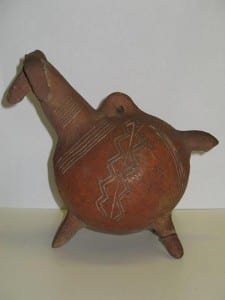Pottery Project Guest Blog: Trade in Opium from Cyprus to Egypt
By Alice Stevenson, on 30 May 2014
Guest Blog by Valentina Gasperini
In our sixth in the series of different perspectives on Egyptian potteryValentina Gasperini, a post-doctoral reseracher at the Department of Archaeology, Classics and Egyptology University of Liverpool, looks at a Cypriote pottery vessel found in Egypt.
As a ceramicist interested in trade and exchange, particularly at the site of Gurob (located at the entrance to the Fayum region), I would like to present a Cypriot juglet found there during Dynasty 18 (c. 1550–1292 BC) and currently located in the Petrie Museum. This vessel can be studied from a variety of viewpoints and it provides important clues about chronology, social needs and changes in fashion.
UC13441 was found at Gurob, most probably during the Brunton and Engelbach archaeological campaign of 1920. When dealing with these early excavations the job of a ceramicist often becomes like that of a detective. By cross-examining the excavation reports and a series of clues, I have been able to trace the original context of discovery of this item: Gurob tomb 603.
 Close
Close



